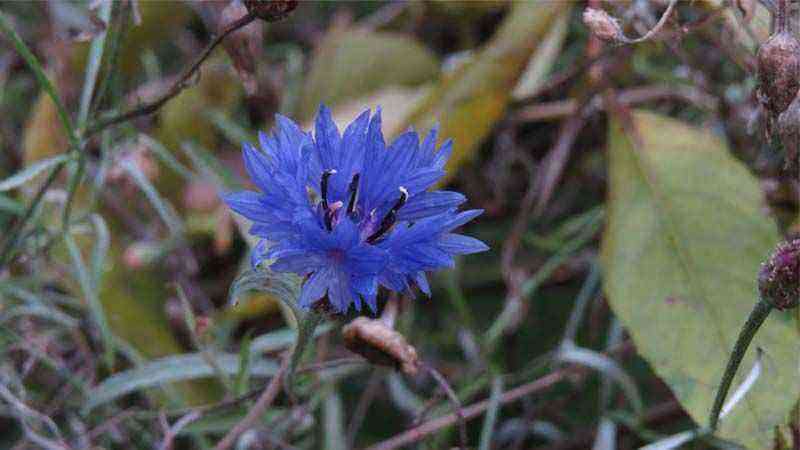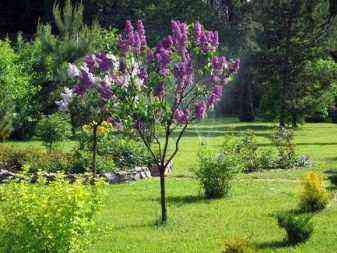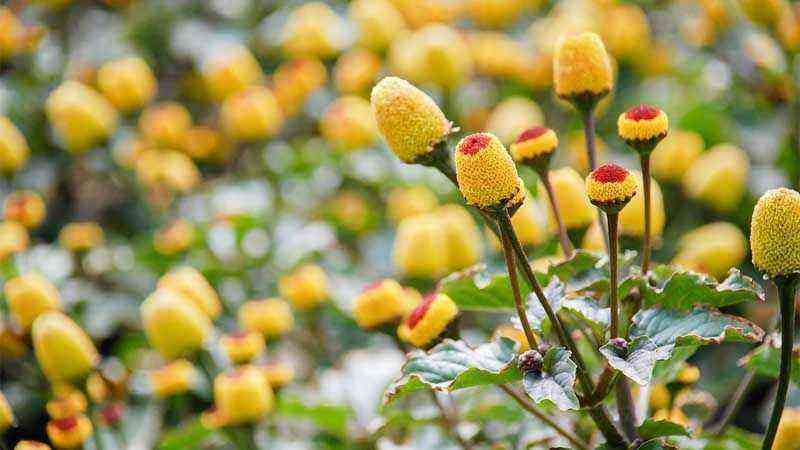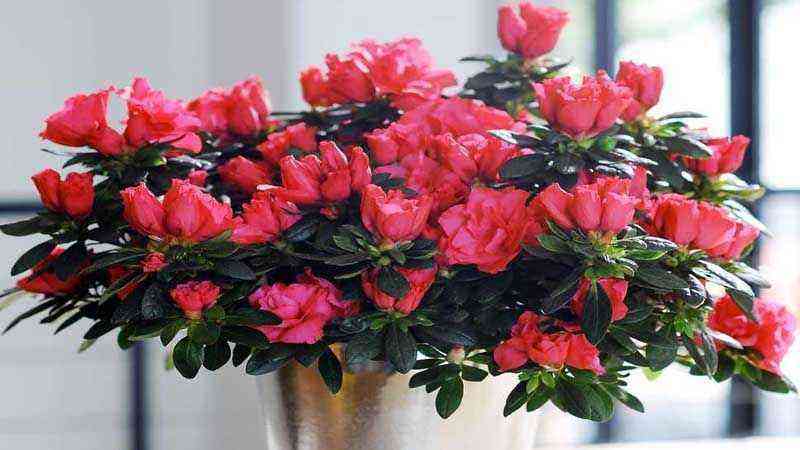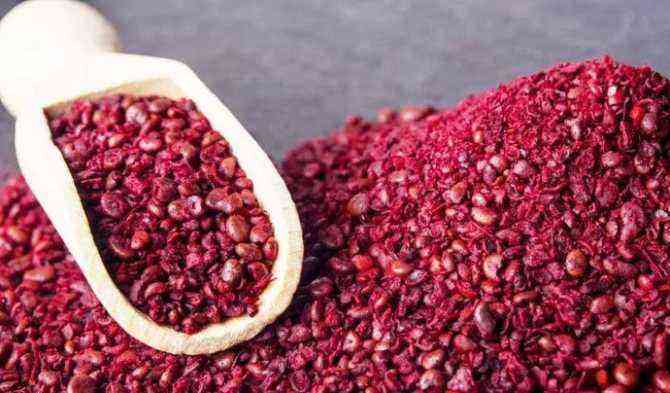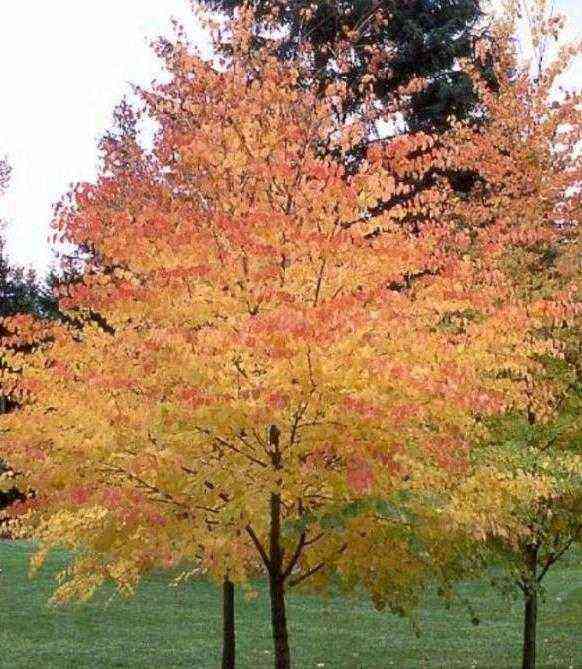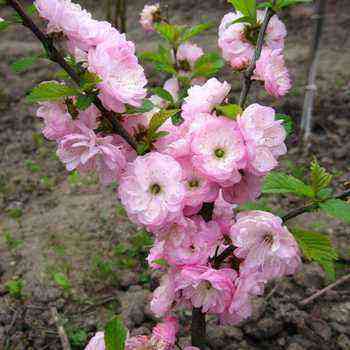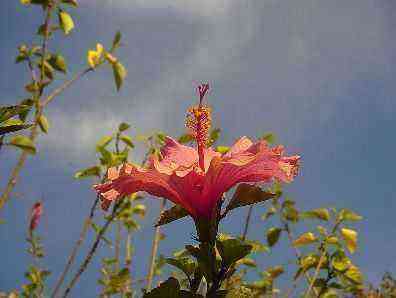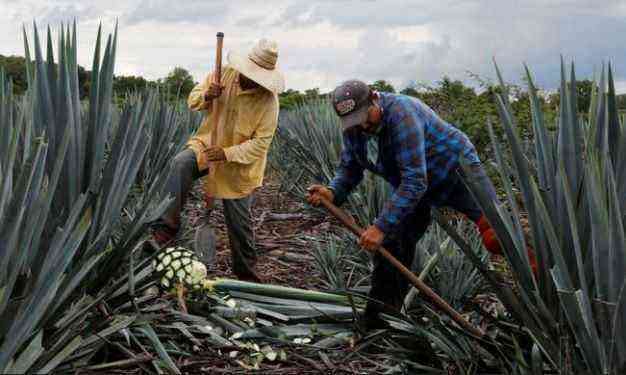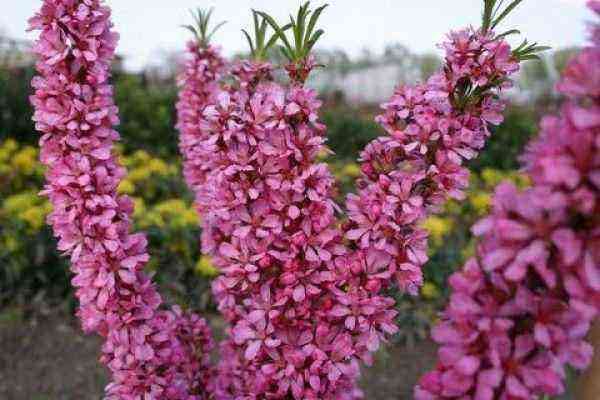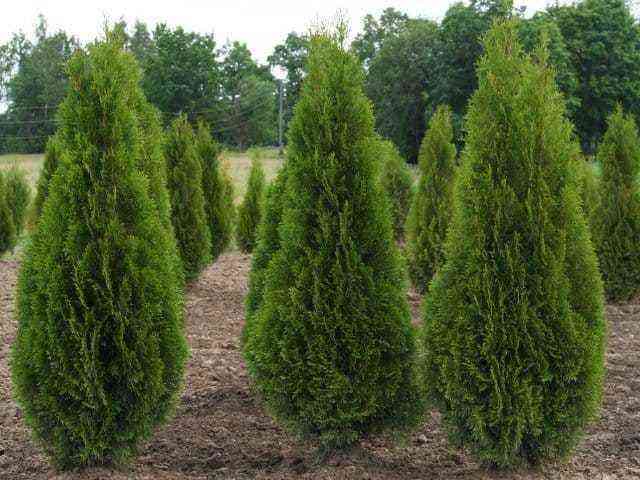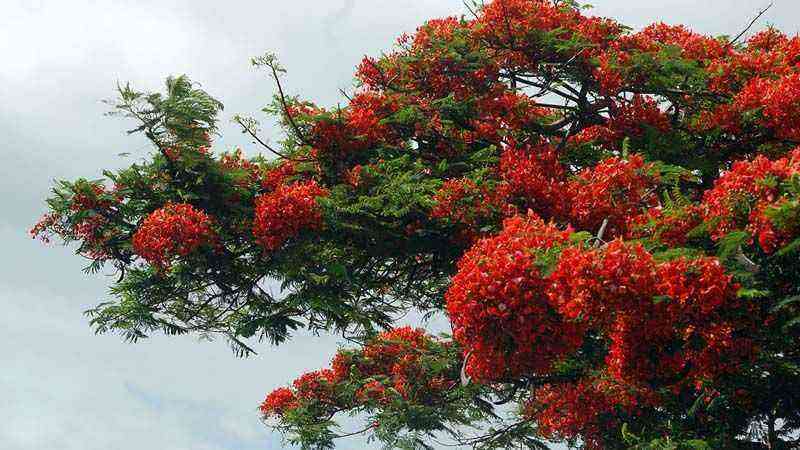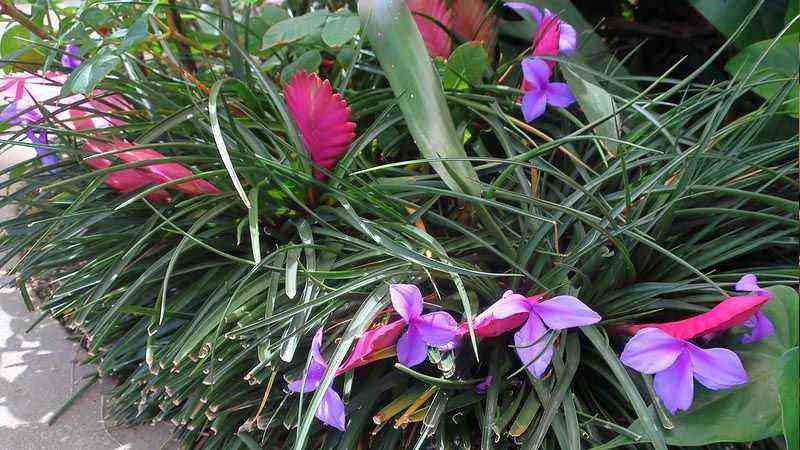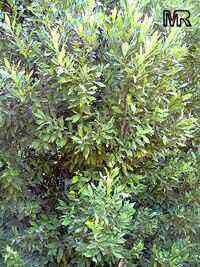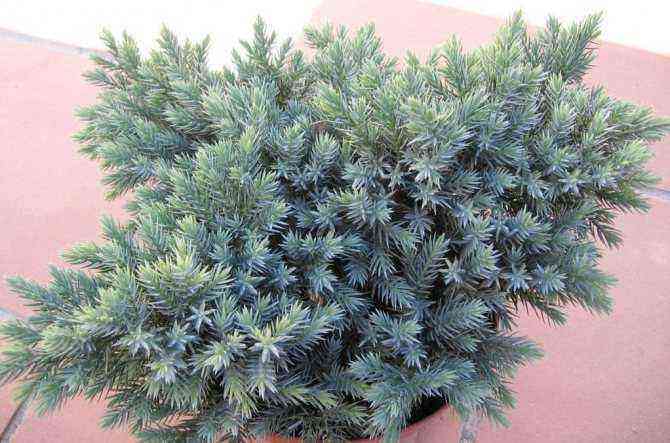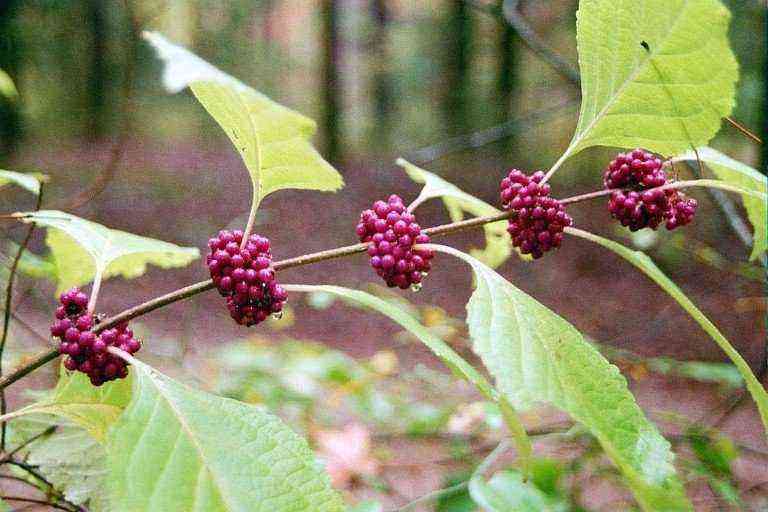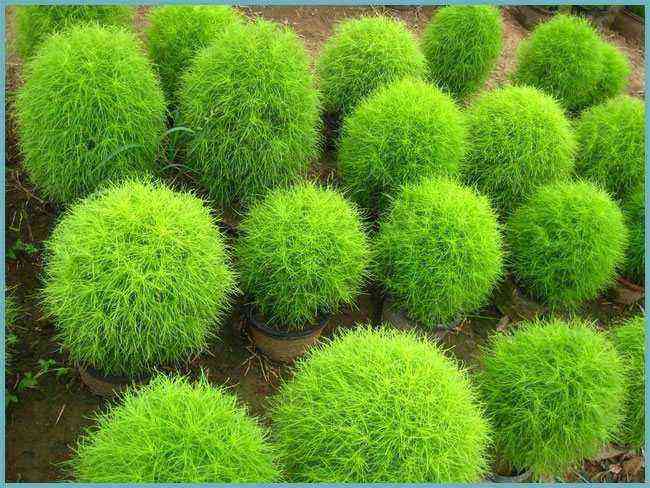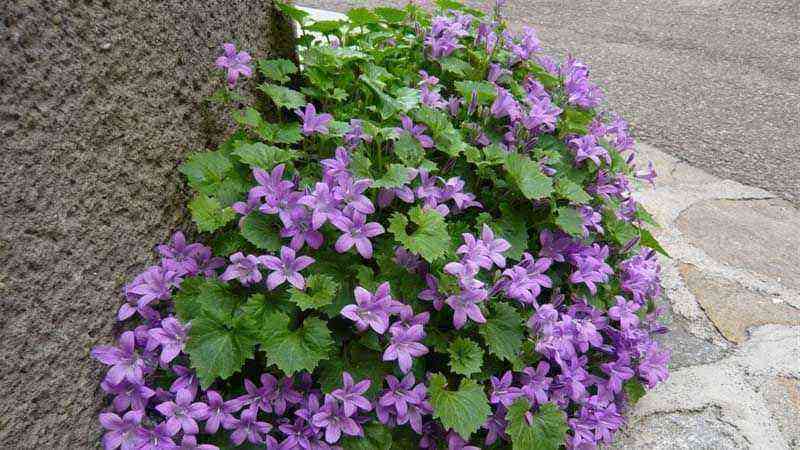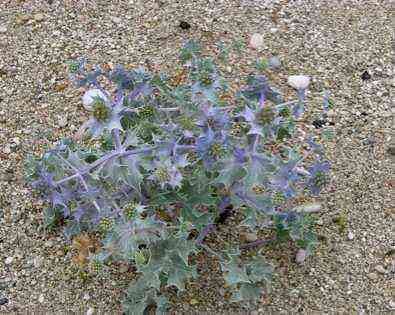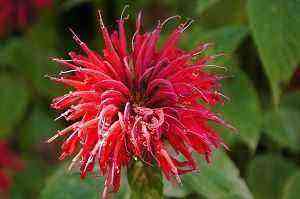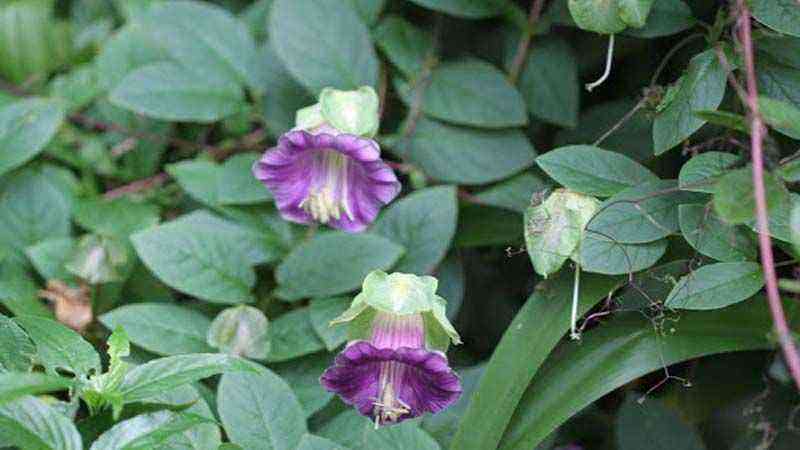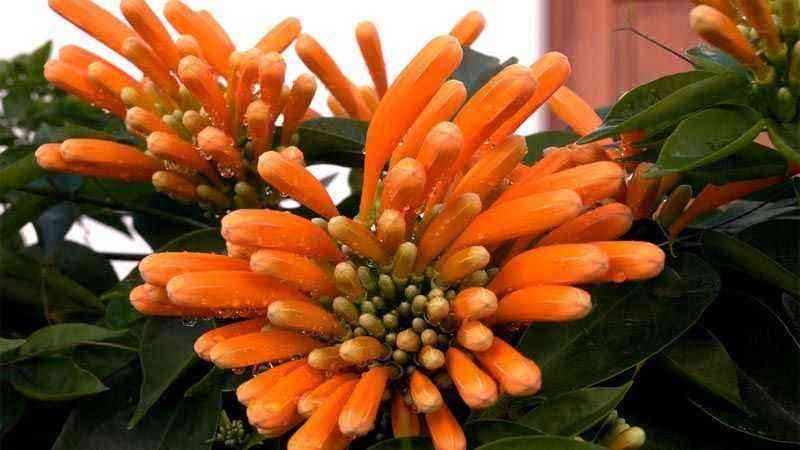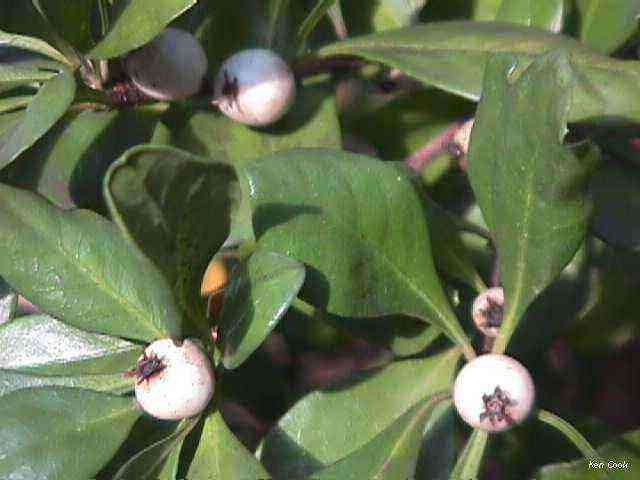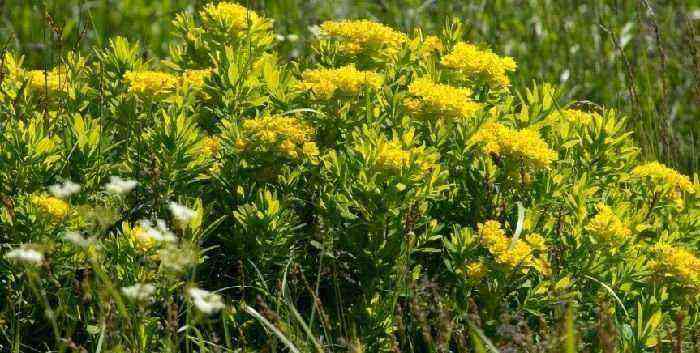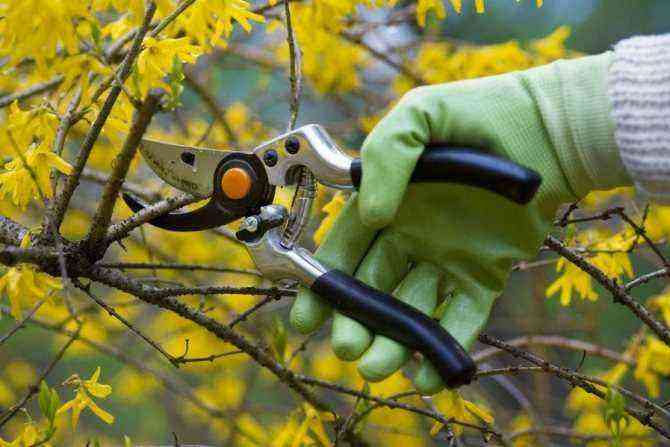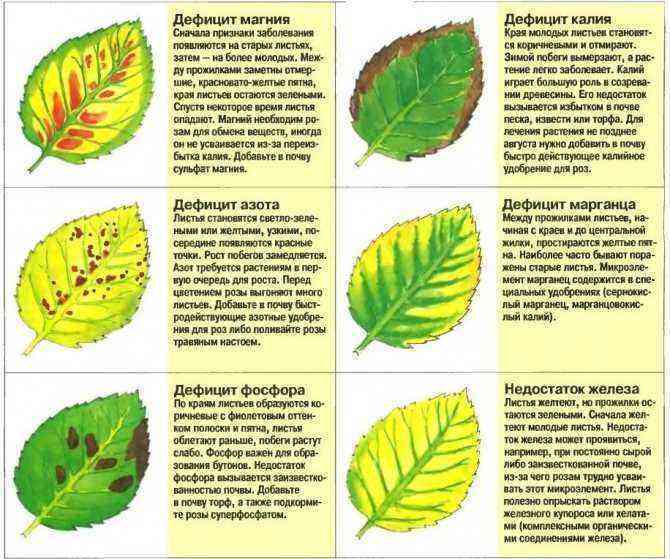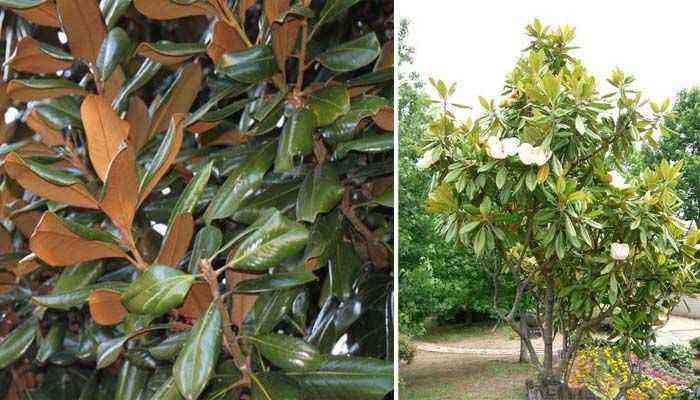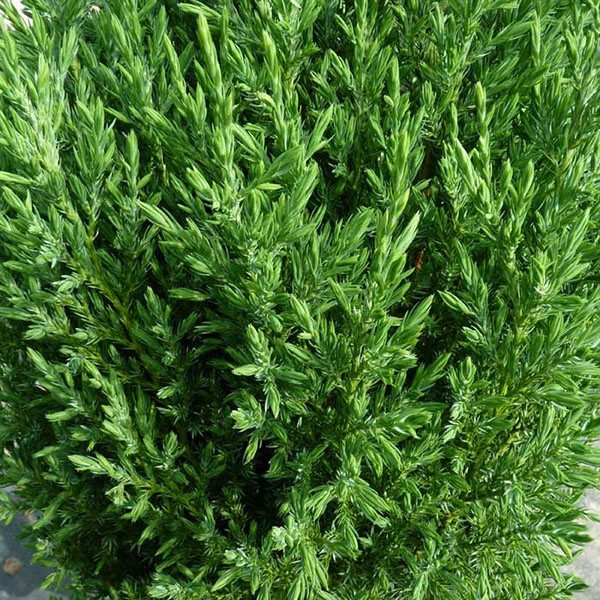
Juniper Chinese Strickta was bred in 1945 by breeders from Holland. This tree belongs to the genus Juniperus of the cypress family. Used for landscaping gardens, parks, suburban areas. Having an attractive appearance, the variety has gained great popularity not only in its native lands, but also in other countries, including Russia. Find out what is the height of the sequoia?
Botanical description
Juniper Chinese Stricta Variegata (Stricta Variegata) is an evergreen perennial culture of the dwarf form of the Cypress family, which is the result of the selection work of Dutch geneticists. The variety of the described perennial was bred in the second half of the twentieth century.
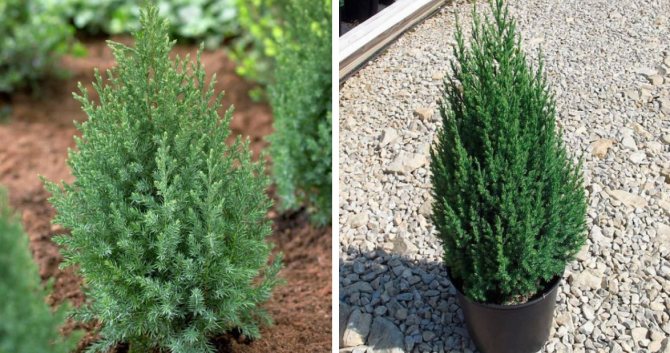
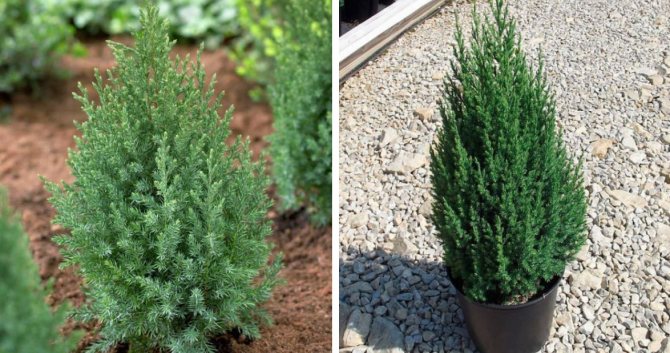
The plant is characterized by small compact size, slow growth rate, at the age of 10 it reaches a height of 2-3 m and up to 1.5 m in diameter.
The shrub has a symmetrical dense conical crown, represented by a set of straight, thin, rather rigid shoots growing in a vertical direction relative to the trunk. The needles of the plant are thin, prickly, but at the same time, quite soft. In a warm period of time, it has a green-bluish color, in winter it becomes gray-blue. Feature of the variety
Did you know? In ancient times, utensils were made from juniper wood. In such containers, even in the heat, the milk did not turn sour, it remained sweet and fresh.
Strikta Variegata is the presence of shoots with white and variegated colors, located in a chaotic manner, which gives the perennial decorative and uniqueness. In the period from August to October, small inedible fruits are formed on the shrub – dark blue cones, about 0.8 cm in diameter, on the surface of which a white waxy coating forms. There are 3 small seeds inside the fruit.
Characterization
Juniper from China Strickta is valued by gardeners for its lack of capriciousness in cultivation, undemanding to soil and humidity, and its ability to adapt to the polluted air of the city.
The variety has the following characteristics:
| Crown shape | Conical, dense, dense |
| dimensions | The height of an adult plant rarely exceeds 2-3 m, with a diameter of 1.5 m |
| Growth rates | Slow, annual growth up to 10-15 cm in height, up to 5 cm in width |
| Root system | Very strong, powerful, branched, can be used to strengthen erosive soils |
| Features | The plant does not impose high requirements on the planting site, is capable of growing on soils with a low level of moisture, does not suffer from air pollution |
| Frost resistance | High, which allows you to grow plants almost throughout the territory of the Russian Federation |
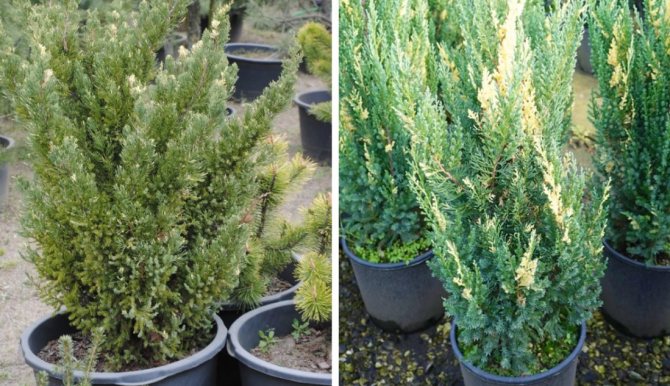
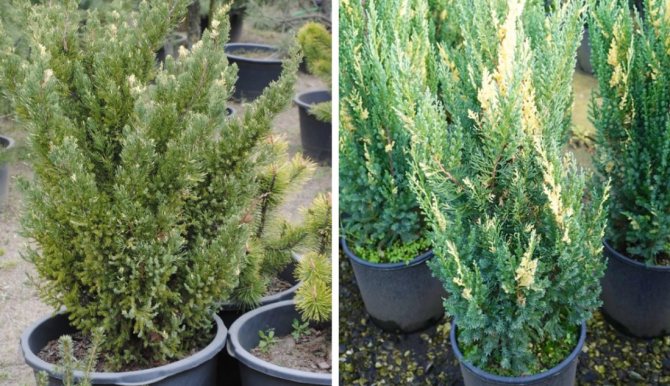
One of the plant’s advantages is its ability to purify the air, inhibit the growth and reproduction of pathogens. This characteristic of culture is often used for therapeutic and prophylactic purposes. The air enriched with phytoncides secreted by the tree has a beneficial effect on the human nervous system, respiratory organs, and promotes the rapid recovery of the body after suffering from pulmonary ailments.
Important! Juniper needles contain a small percentage of toxic substances, therefore, with prolonged contact with the skin, in some cases, allergic reactions may occur.
Use in landscape design
In the field of landscape design, the juniper of the described variety is considered one of the most demanded and popular. It is ideal for creating Chinese or Japanese compositions. Due to the fact that the shrub responds well to cutting and shaping, it is often used to form “living” fences, landscaping terraces, balconies and tombstones.
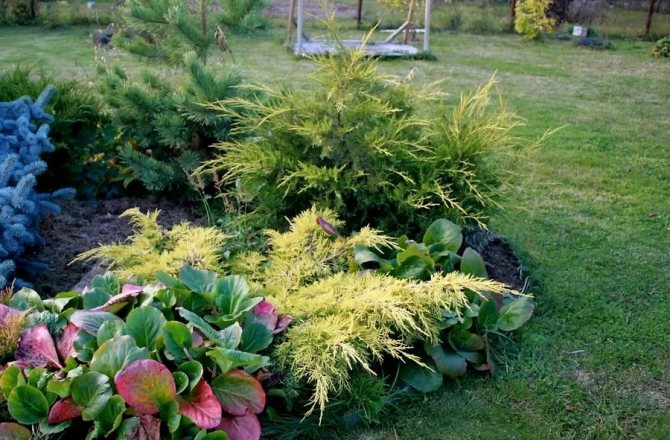
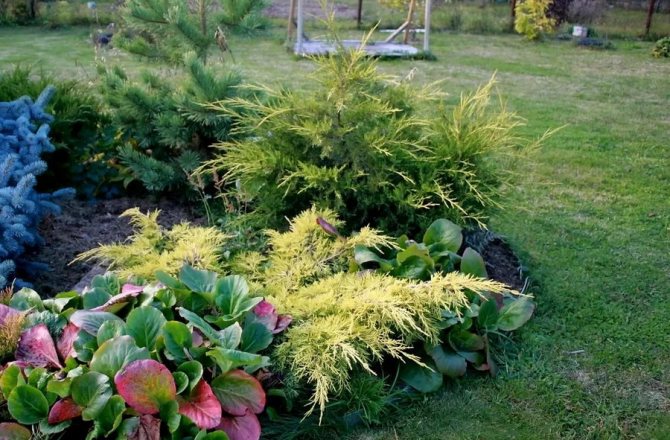
Strictta Variegata looks no less beautiful as part of rockeries, alpine hills, rocky gardens. It is combined with heather crops, used to decorate household plots, city alleys and parks. Perennials can often be seen in solitary plantings or in a variety of group plantings.
How to plant a juniper
As already noted, the juniper is not too picky about the place, the composition of the soil and the climatic conditions of the region. However, in order to grow a decorative, aesthetically pleasing shrub, it is recommended to follow some basic rules when planting it.
Find out more about when is the best time to replant your juniper in a new location.
Site preparation
Strikta prefers to grow in well-lit sunny places or in partial shade. It should be noted that the needles of a young plant are quite sensitive to direct sunlight, so the seedlings must be shaded. Optimal for the plant is a light, nutritious, air and moisture permeable soil with a neutral or weak acidity level.
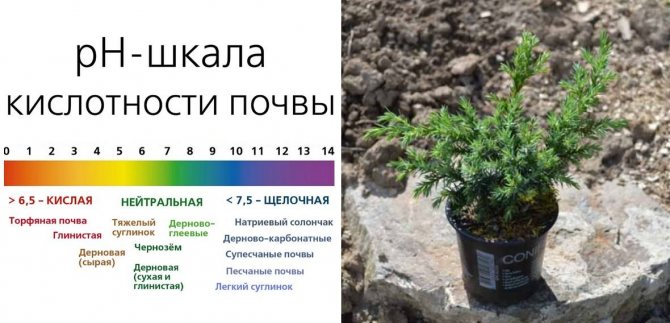
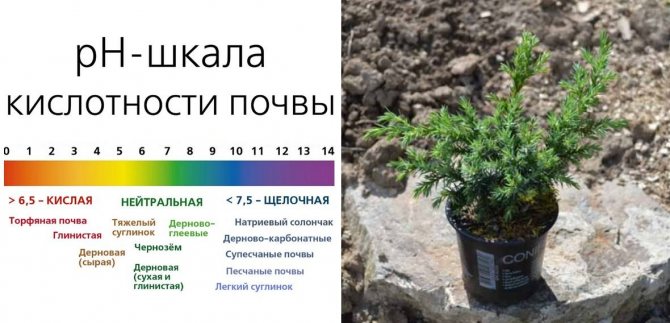
However, the culture is able to tolerate dry, calcareous and sandy soil normally. It is important to ensure that the site is protected from drafts and cold winds, which negatively affect the condition of the shrub and can provoke the development of fungal ailments.
Recommendations for choosing seedlings
Experts recommend purchasing seedlings in special nurseries or specialized markets.
When choosing a planting material, you need to pay attention to the following aspects:
- plants with a closed root system or seedlings in containers should be preferred;
- the material must have young shoots;
- juniper branches should be firm, fresh, without signs of dryness and brittleness;
- the crown of the bush should be of a rich bright color, without dry areas, signs of diseases or parasites.

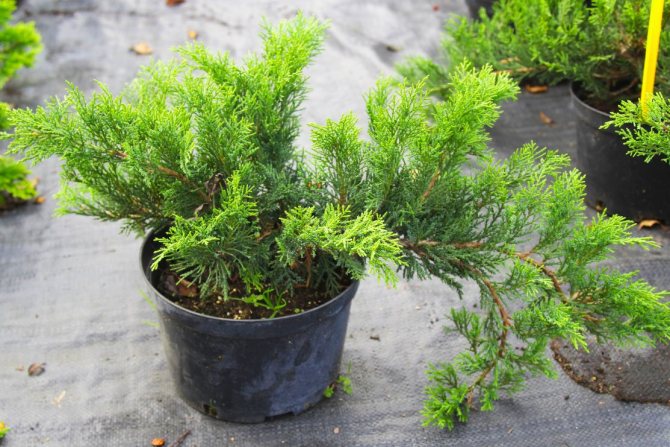
A seedling that is located in a container, when planting, takes root much better, takes root and adapts to a new place much faster.
Rules of landing
Planting is allowed in the spring – in April, when the likelihood of the return of night frosts disappears, or in the fall – in October, a few weeks before the expected cold weather.
Important! Planting a seedling with open roots must be carried out immediately after purchase.
Planting technology is simple and is based on the following steps:
- Dig a hole 2-3 times the size of the root system.
- Line the bottom of the pit with a 20-cm layer of drainage made of expanded clay or pebbles.
- Mix part of the withdrawn land in equal proportions with peat and add a complex mineral preparation intended for conifers to the mixture.
- Cover the top of the drainage layer with a layer of fertile soil.
- Place the seedling in the hole, cover it with soil so that the neck of the root remains on the surface.
- Lightly tamp the soil with your hands, water the seedling abundantly with settled, not cold water.
- Cover the trunk circle with a layer of bark or chips mulch.

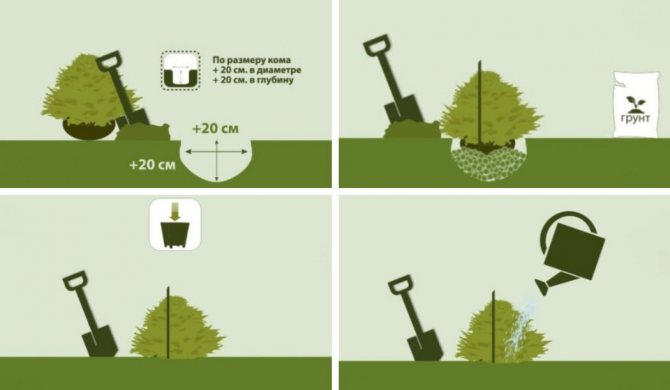
If the plant is located in a sunny place, then it is recommended to shelter it from the sun’s rays in the first weeks. When planting several specimens, an interval of 0.5 to 2 m should be maintained between them, depending on the size of the seedlings.
Care requirements
For the early rooting of ephedra in the open field, it is necessary to provide them with proper care and attention.
The description of the plant includes an increased need for moisture, which will provide an intensive growth of the crown and roots.
In dry summers, it is necessary to moisten the shrubs at least 3 times per season. Depending on the size, the water consumption is different – for a young seedling, 10-15 liters are enough, for an adult – 25-30 liters.
This coniferous culture does not grow well and loses its decorative qualities in drought and heat conditions, so the crown needs to be irrigated often – every day in summer.
Loosening
This procedure is carried out after each watering, but not deep, since the roots of the Strickt are close to the surface.
To protect it from drying out, a mound of peat soil is formed in the trunk area.
Feeding
When planted in fertile soil, this plant does not require fertilization. If you already decided to fertilize it, then you should not use organic fertilizing – cow dung, chicken droppings, which can cause severe burns.
Once a season, in spring, shrubs can be spilled with a liquid solution of azophoska, nitrophoska or urea at the rate of 30 g per 20 liters of water.
Trimming
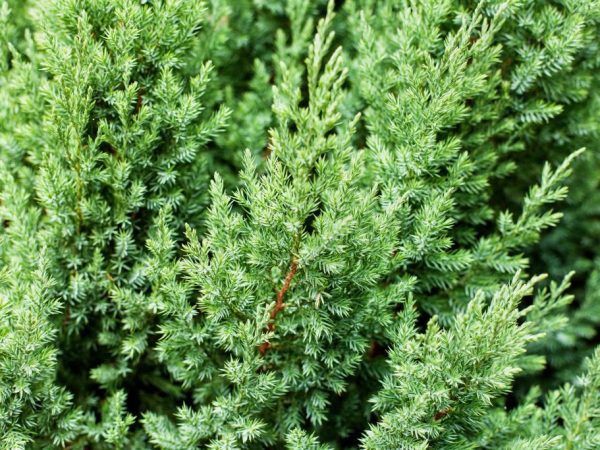
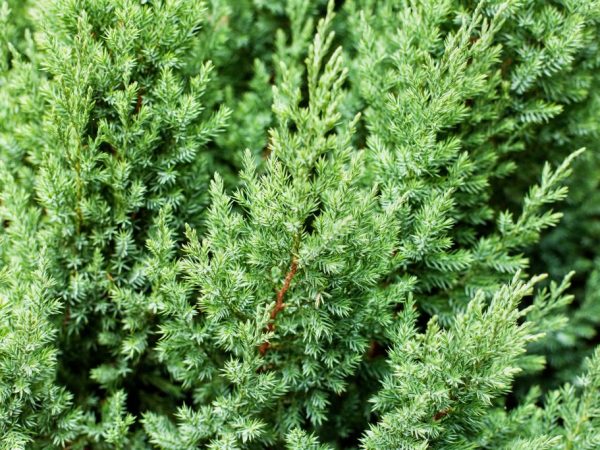
Trees undergo preventive pruning every year
Chinese juniper, which sometimes reaches 3 m in height, is widely used in landscape design.
The plant is cone-shaped, and the shoots grow upward – in the process of pruning, it can be given any shape.
- A shaping haircut is carried out in the summer during the development of a young growth.
- In the spring, a sanitary haircut is required to remove areas broken off by the wind, damaged by disease and frost.
Preparation for winter
For adult specimens, it is sufficient to provide a thick layer of mulch around the trunk zone. Sawdust, peat or wood chips are used. To protect against breaking off under a cover of snow or strong winds, the branches of a large plant are pressed against the trunk and tied with a rope.
Young specimens need shelter – first, laying mulch in the area of the trunk, then wrapping the shoots with roofing material, spunbod or agrofibre.
Diseases and pests
Most often, the Chinese juniper is affected by fungal diseases, which can be caused by unfavorable climatic conditions or poor care. A perennial is able to become a “victim” of more than 40 types of fungi that infect the roots of the plant, from which the shoots and needles subsequently suffer.
Did you know? It is surprising that natural thickets of junipers are localized near coal beds. This property is used by geologists to search for coal deposits. This is how the coal basin in the Moscow region was opened.
Common signs of fungal infection are:
- yellowing and further dropping of needles;
- yellowing and drying of shoots;
- the appearance on needles and shoots of spots of various colors: brown, dark, yellow.
The most common diseases of juniper are fusarium, brown shute, rust. In case of infection of a perennial, all diseased parts should be carefully cut and destroyed. Trees must be sprayed with fungicidal preparations, for example, Fundazol.


Of the pests, the greatest harm to the culture is caused by: sawfly, needle mite, aphid . Pests feed on the sap of the plant, which is why it gradually withers, shoots and needles dry out. An effective method of combating parasites is considered to be spraying the bushes with broad-spectrum insecticides, for example, “Aktara” or “Aktellik”.
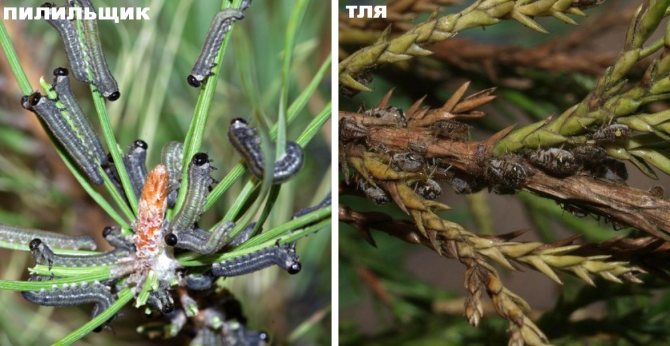
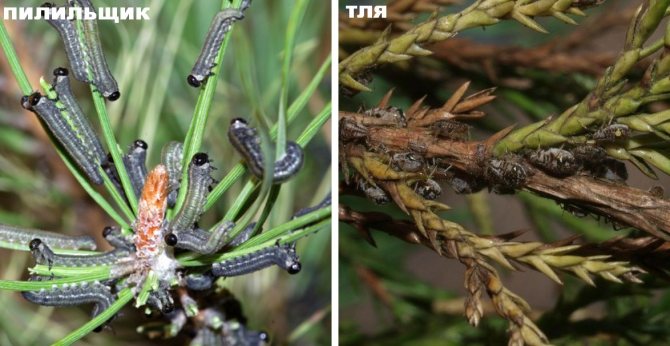
To avoid the development of fungal diseases and the appearance of insect pests, preventive treatments of trees with insecticides and fungicides allow.
Reviews of gardeners
Gardeners who have been cultivating this crop for several years leave positive reviews:
- the Chinese strickt juniper adorns any place in the garden and, with good care, retains its decorative effect all year round;
- many choose this plant due to the possibility of quick and easy propagation by cuttings – it is possible to get several new specimens at once for the garden landscape;
- after preventive treatments, the ephedra is practically not damaged by diseases and pests.
Methods of reproduction
For the cultivation of the juniper of the Strickta Variegata variety, the method of cuttings or propagation by layering is used. It is almost impossible to grow a plant by seed method at home. Such a reproduction technology is within the power of only professional gardeners and breeders. When the cuttings take root, they are planted in the ground.
Learn how to propagate a juniper by cuttings.
When breeding by cuttings:
- in the spring, one-year-old shoots are cut from the bush from the trunk;
- cuttings are planted in a mixture consisting of equal parts of sand and peat;
- the container with seedlings is covered with plastic wrap to create a greenhouse effect;
- plantings are provided with regular ventilation and watering.

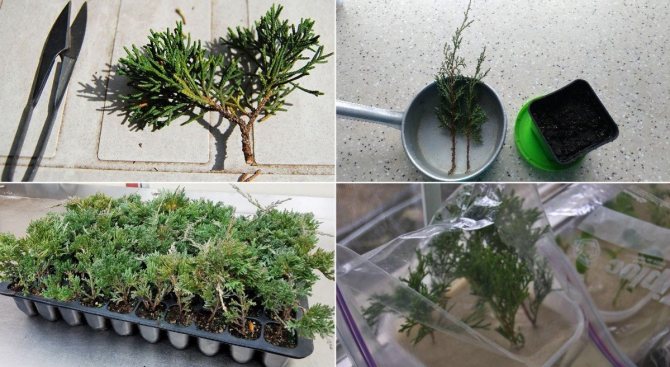
The juniper reproduces well by layering: the branches that spread along the ground are laid in previously made depressions filled with a sand-peat mixture, sprinkled with soil, pinched the top. Layers rooted in this way become full-fledged separate plants.
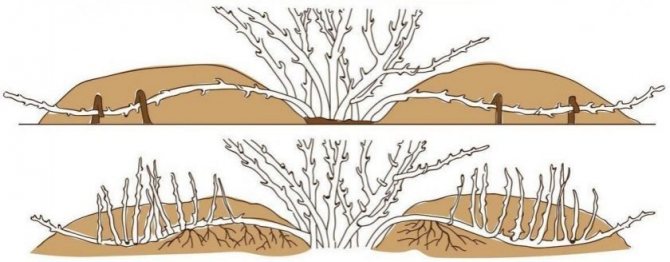
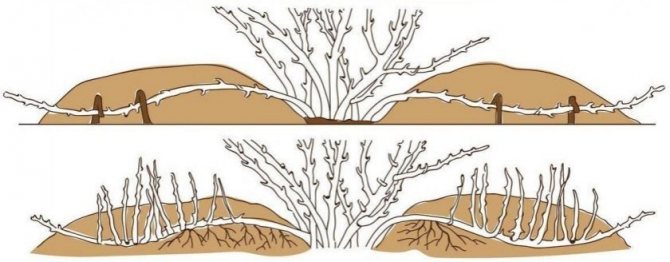
It is no coincidence that the Chinese juniper Strickta Variegata is a “favorite” in the field of landscape design. The plant’s non-profitability, high aesthetic qualities, the ability to adapt to environmental conditions allow it to be used to create a wide variety of original compositions in small backyard plots or in large city parks.
Features of caring for Strickt juniper at home
Junipers are rarely used as houseplants. Despite the fact that this is an evergreen culture, it, like all conifers, needs a dormant period, therefore it is demanding on the temperature regime. However, now with increasing success these small trees are kept in living quarters. On the forums of indoor flower lovers, you can see photos in which the Chinese strickta juniper not only grows at home, but is also used as an element of whole plant compositions.
Due to its slow growth, Strickta Juniper is one of the most suitable varieties for growing at home in a pot. In order for a juniper tree to delight its owner for a long time, you must adhere to simple rules:
- the purchased seedling should be immediately transplanted into a larger pot;
- optimal use of soil for coniferous trees. Peat soil is also suitable;
- pour drainage on the bottom of the pot to avoid destructive stagnation of moisture;
- after transplanting, sprinkle the top layer of earth with mulch and sprinkle with fertilizer for conifers;
- water sparingly – in summer as it dries, in winter no more than twice a month;
- often, up to several times a day, spray the crown with water from a spray bottle;
- in winter, carry the pot away from heating appliances;
- fertilize in spring and summer every 2 weeks with mineral complexes added to water for irrigation;
- the pot should be on the sunny side. In summer, avoid direct sunlight on the crown;
- the temperature in summer should not exceed +25 ° C, in winter +13 ° C;
- young trees should be transplanted into larger pots every spring. It is important to know that even minor damage to the root system will lead to juniper disease.

